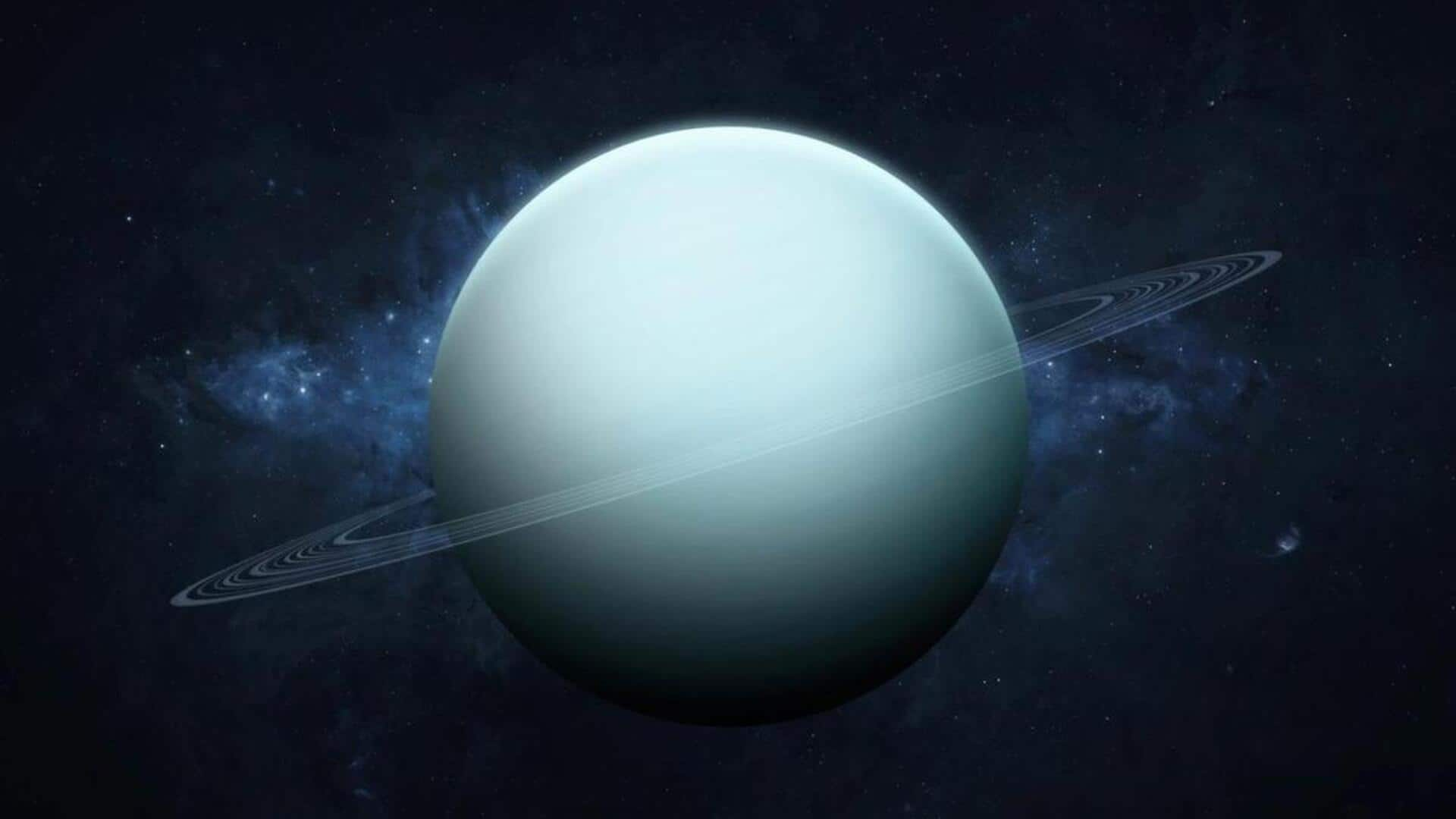
Uranus is unexpectedly cooling, and we now know the reason
What's the story
Uranus, the seventh planet from the Sun in our solar system, has been witnessing a mysterious drop in temperature. The phenomenon is specifically observed in its upper atmosphere, called the thermosphere-corona. Unlike other planets whose rotation axis is perpendicular to their orbital plane, Uranus has an extreme tilt angle of 98 degrees and a retrograde orbit. These unique characteristics contribute to its unusual relationship with the Sun, and its thermosphere-corona's temperature fluctuations.
Atmospheric anomaly
Uranus's thermosphere-corona: A unique atmospheric layer
The thermosphere-corona of Uranus is a unique layer that stretches up to 50,000km above the planet's surface and features temperatures over 500°C. This region is now undergoing a cooling trend, with temperatures halving since first measured by Voyager 2 in 1986. The reason behind this temperature drop has long intrigued astronomers.
Temperature tracking
Monitoring Uranus's temperature through ground-based telescopes
The thermosphere of Uranus features an embedded ionosphere, a layer of ions separating the lower atmosphere from the planet's magnetosphere. H3+ ions in this ionosphere quickly reach thermal equilibrium with surrounding neutrals, and emit photons in the near-infrared (NIR) spectrum. These NIR wavelengths can penetrate Earth's atmosphere, enabling astronomers to monitor changes in Uranus's thermosphere temperature using ground-based telescopes.
Research revelation
Solar wind power governs Uranus's thermosphere temperature
According to a study published in Geophysical Review Letters, led by Dr. Adam Masters from the Department of Physics at Imperial College, solar wind power is likely governing Uranus's thermosphere temperature. The solar wind, a stream of charged particles emanating from the Sun's outermost layer (the corona), has been identified as the potential cause behind the cooling trend on Uranus.
Unique interaction
Solar wind's influence on Uranus differs from other planets
Dr. Masters said that the solar wind's control over Uranus's upper atmosphere is unlike anything we've seen at any other planet in our solar system. The properties of the solar wind change gradually over time, mirroring changes in Uranus's upper atmosphere. Since around 1990, the average outward pressure of the solar wind has been slowly but significantly decreasing, a trend that closely aligns with Uranus's changing temperature.
Temperature control
Uranus's temperature isn't controlled by photons
Unlike Earth, where the Sun's photons heat our planet and sustain life, Uranus's temperature isn't dictated by photons because of its distance from the Sun. The waning solar wind is letting Uranus's magnetosphere expand, protecting it from further solar wind and regulating energy flow around the planet. This energy ultimately reaches the thermosphere and maintains its temperature.
Mission implications
Discovery could impact future mission to Uranus
The finding of solar wind's contribution to Uranus's cooling could impact a proposed future mission to the planet, which was listed as a top priority by The Planetary Science and Astrobiology Decadal Survey 2023-2032. The mission, dubbed Uranus Orbiter and Probe (UOP), seeks to study the ice giant's atmosphere. These new findings could require revising the mission goals to study how solar wind energy interacts with Uranus's magnetosphere.